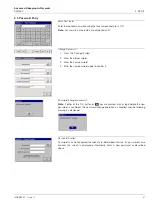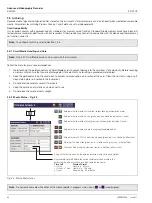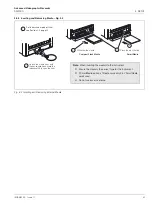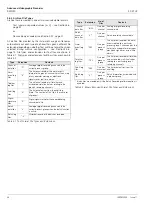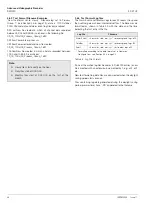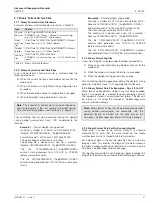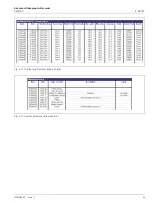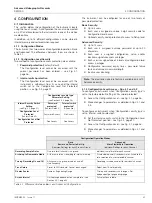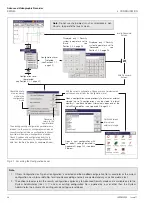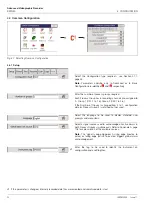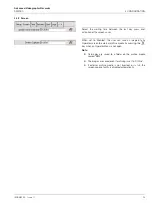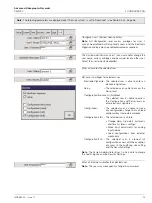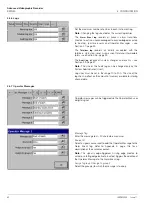
Advanced Videographic Recorder
SM2000
4 CONFIGURATION
IM/SM2000
Issue 11
45
4 CONFIGURATION
4.1 Introduction
This section details the configuration of the instrument locally
using the touch screen. A configuration file can also be created
on a PC and transferred to the instrument via one of the archive
media options.
In addition, up to 16 different configurations can be stored in
internal memory and restored when required.
4.1.1 Configuration Modes
The instrument has two modes of configuration/operation, Basic
and Advanced. The differences between them are shown in
Table 4.1.
4.1.2 Configuration Level Security
Two methods of configuration access protection are available:
1.
Password protection
(Factory Default).
The Configuration level cannot be accessed until the
correct password has been entered – see Fig. 4.1,
page 46.
2.
Internal switch protection
.
The Configuration level cannot be accessed until the
instrument is withdrawn from its case and the internal
switch set to the 'Configuration Level Not Protected'
position – see Fig. 4.2, page 47.
The instrument can be configured for one of two levels of
password protection:
Basic Security:
Up to 4 users
Each user is assigned a unique 4-digit security code for
Configuration level access
Optional security code protection of access to Setup level
Advanced Security:
Up to 12 users
Each user is assigned a unique password of up to 20
characters
Each user is assigned configuration, setup and/or
electronic signature access privileges
Each user is assigned one of 3 levels of configuration level
access privileges
Configurable password expiry times, password failure
limits and minimum password length
Inactive user disabling
4.1.3 Configuration Level Access – Figs. 4.1 and 4.2
To configure an instrument when 'Configuration security type' is
set to the factory default setting of 'Password protected':
Access the Configuration Level – see Fig. 4.1, page 46.
Make changes to parameters as detailed in Figs. 4.1 and
4.3.
To configure an instrument when 'Configuration security type' is
set to 'Internal switch protected':
Set the internal security switch to the 'Configuration Level
Not Protected' position – see Fig. 4.2, page 47.
Access the Configuration Level – see Fig. 4.1, page 46.
Make changes to parameters as detailed in Figs. 4.1 and
4.3.
'Configuration security type'
Parameter Setting
Internal Security Switch
Setting
'Password
protected'
(Factory Default)
'Internal switch
protected'
(Alternative)
Configuration Level
Protected
(Factory Default)
Password Access
No Access
Configuration Level Not
Protected
Free Access
Free Access
Note.
The electronic signature feature is available only with
Advanced security.
Configuration/Operation Modes
Basic
Easier and Faster to Set Up
(Common Settings for each Process Group)
Advanced
More Flexibility in Operation
(Individual Settings for each Channel)
Recording Sample Rates
One rate for all channels in a group.
Individual sample rate for each channel.
Archiving to Removable Media
At the same rate as recording to internal memory.
At selectable primary/secondary rates, linked to the
rate selection of a user-selectable channel.
Turning Recording On and Off
All channels in a group turned on and off
simultaneously.
Recording turned on and off for individual channels.
Trace Colors
Preset to DIN standard. Cannot be changed.
Select from 16-color palette.
Display Scales
Same as Engineering Range.
Primary and secondary scale ranges. Set
independently of engineering range.
Screen Interval
Limited range dependent on sample rate – see
Section 4.5.1, page 64.
Full selection available.
Table 4.1 Differences Between Basic and Advanced Configurations

